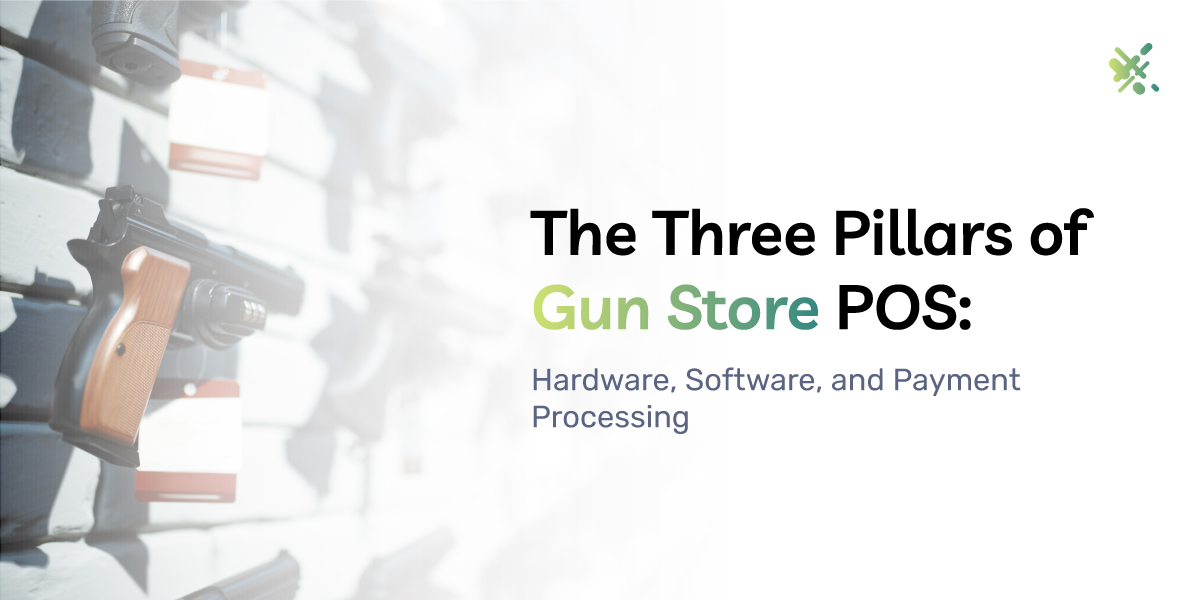Point of sale systems (POS) have revolutionized retail businesses in recent years. These platforms started as a way to add more functionality to basic checkout procedures and payment processing. But over the years, they have evolved into an indispensable tool for managing and running a retail business. The firearms industry is no different, and gun store POS systems designed specifically for firearms stores are now available. These cloud-based systems can help with ATF regulatory compliance and other bookkeeping needs specific to a gun store.
But beyond helping you comply with regulations, this firearms retail technology tool can transform your business by lowering your costs and increasing efficiency. The right POS system can also help you explore new revenue streams you don’t currently use.
To get all the benefits a POS offers, you need to understand precisely how they work and how they interface with your existing workflows. This lets you choose the right solutions for your specific situation.
To help you choose the right POS, we’ll explain how a POS works and what the different components are. We’ll also explain some of the unique benefits of gun stores as well as some tips on choosing the best POS for you.
Gun Store POS Basics
You’ve likely seen POS systems at other retail locations. These systems combine hardware and software and replace the standard cash register or payment terminals used by retail stores in the past. Most of these have a touch screen so employees can interact with the system. There may also be a customer-facing touchscreen to facilitate certain checkout operations.
A gun store POS is essentially the same except that it has functionality designed to improve gun store business efficiency and deal with regulations for FFls.
Once implemented, the POS will become the centralized system for handling your transactions, background checks, inventory, and ATF paperwork.
However, that’s just the basics of a gun store POS, and there are many other strategic advantages of POS systems you can add to improve your business operations and increase your firearms retail revenue growth.
Finally, a POS system can help your gun store improve the overall customer experience. Faster checkout, extra services, and mobile device payment options all contribute to improving your customer’s shopping experience.
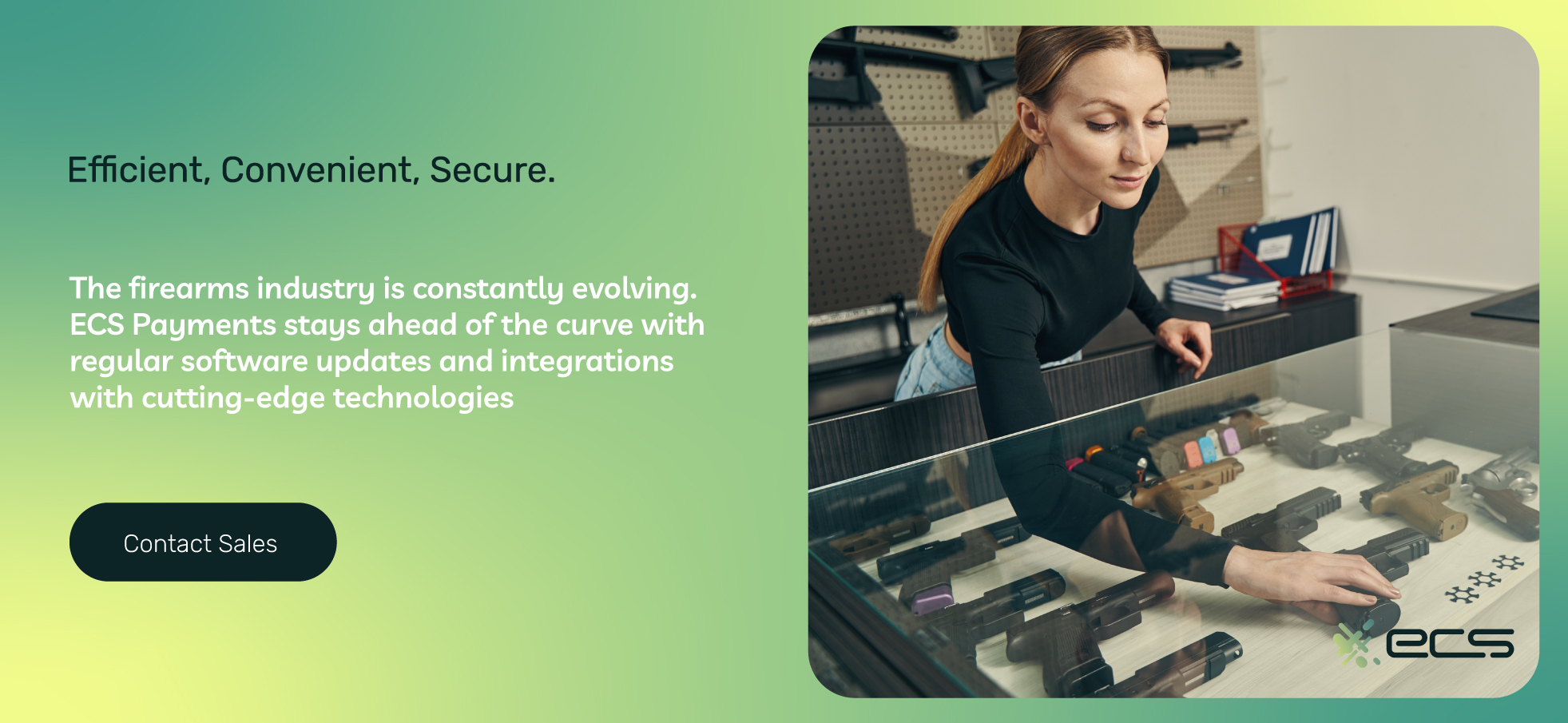
Gun Store POS Components
Several different systems make up a gun store POS. Each one serves a different purpose, and you can choose among a few options to find a solution that fits your needs.
POS Hardware
The most obvious component of a POS system is going to be the hardware. This includes all the physical devices. You may already be familiar with some of these, like external payment terminals.
Below is a list and explanation of the hardware available for POS systems
POS Station
The point of sale (POS) station typically takes the form of a computer or tablet capable of running specialized POS software. This designated station is the central hub for processing all transactions and facilitating customer interactions and payment confirmations.
These stations generally use a touchscreen as the interface, although the screen is usually separate from the station itself. However, newer models tend to be single units to help with simplicity and provide a more attractive design.
Sometimes, people simply refer to these all-in-one POS stations as POS terminals. When shopping for a POS system, you may find these terms used interchangeably. However, there is a slight difference between the two pieces of hardware.
Credit Card Reader/Terminal
You likely already have at least one of these devices. A card reader accepts credit or debit cards. Your gun store can also use card readers to accept gift cards, including those offered by your store.
If you already have a credit card reader, you may be able to use it with your new POS system. However, it may be an excellent time to upgrade if you use older terminals lacking newer features.
For example, newer readers accept contactless payments and digital wallet payments, an increasingly popular payment method among consumers. Using these mobile-friendly gun store solutions at your shop will greatly increase sales and future-proof your business.
You also have the option of using wireless card readers with your POS system. This will allow you more freedom and flexibility in setting up your cash wrap area.
POS Barcode Scanner
A barcode scanner is common in retail settings but is much more important for a gun store POS system. As a gun store, you need to check identification and document serial numbers with minimal chance for errors. You can use a barcode scanner to check IDs; most POS systems integrate this function easily.
Besides having a scanner at the checkout area, many gun stores also choose to use these when accepting new inventory, including firearms. The barcode scanner quickly captures serial and product numbers for automatic entry into your POS.
Receipt Printer
A receipt printer is necessary for virtually all POS systems. These come in different format sizes, and for a gun store, you may want a larger printer. Common receipt printers can be small in format, but with a gun store, you may want to print waivers or work orders for gunsmithing work. Therefore, you’ll need a receipt printer that can handle standard paper sizes.
Many newer POS systems will allow customers to choose to receive receipts electronically, usually via email. It’s smart to offer this option, but you’ll still need the ability to produce paper receipts and other related documents during a transaction.
Cash Drawer
Even with a POS system, you will need to accept cash. But you want all your cash transactions integrated with the rest of your payments. The POS system integrates a cash drawer, functioning like a traditional cash drawer, to count all cash/non-cash transactions together.
Some businesses choose to forgo a cash drawer, but this is still a good option for gun stores, and many customers will still choose to pay with cash.
Customer Facing Display
Some POS systems also offer options for a customer-facing display. These displays can be a simple screen, or they can be a touch screen. Touch screens allow your POS system to accept form submissions and other interactive elements that can help with firearm transactions.
For instance, you can fill out an electronic Form 4473 using a touch screen. Sometimes, the POS directly connects the touch screens or situates them at a different location, such as a kiosk. Placing them in different locations allows customers to fill out forms without holding up the checkout area for customers making non-firearm purchases.
Another option for a customer-facing touch screen is for gun range sign-in. You can display your waiver on the customer touch screen and ask guests to sign it electronically.
For a gun store, having at least one customer display helps to get the most out of a POS system. For larger stores, connecting more than display helps during busy times when several firearm transfers occur simultaneously.
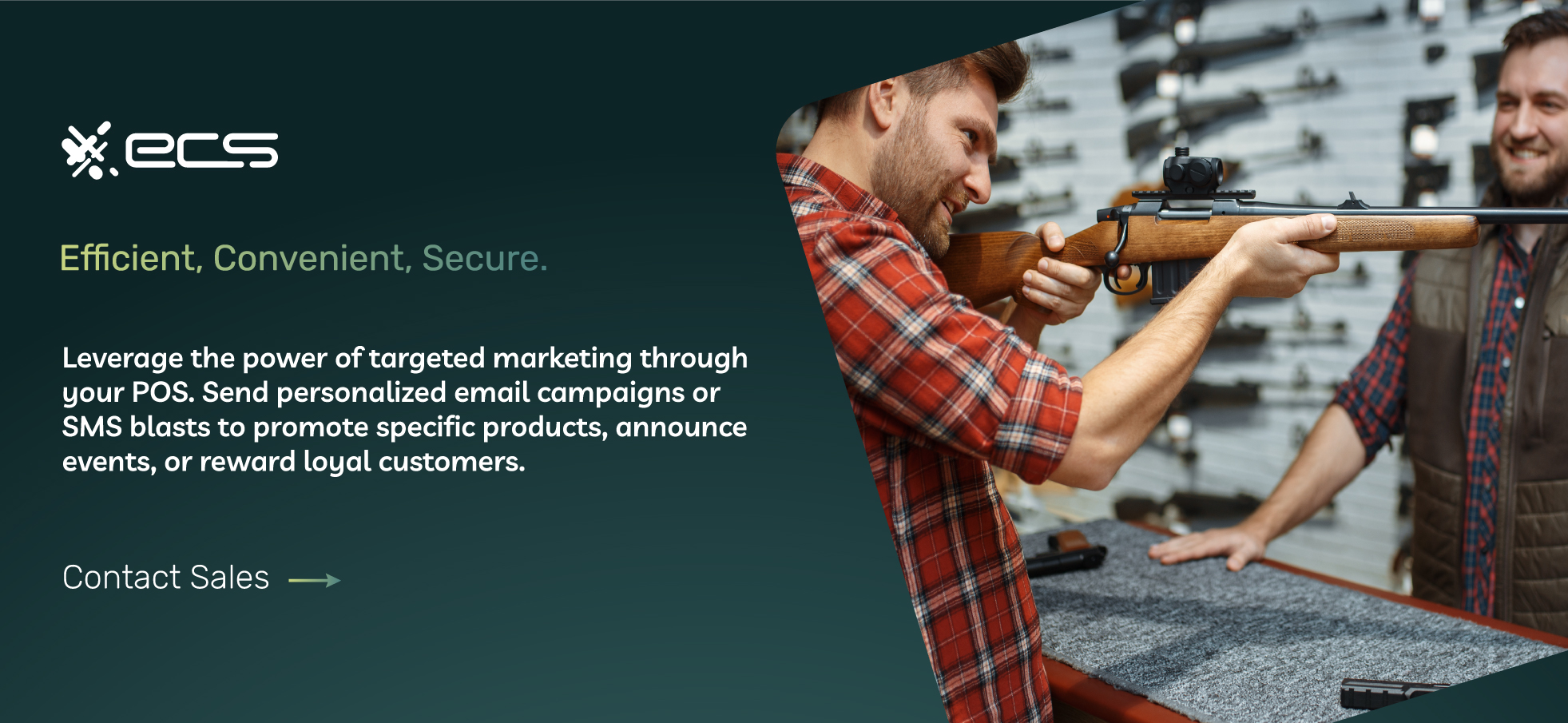
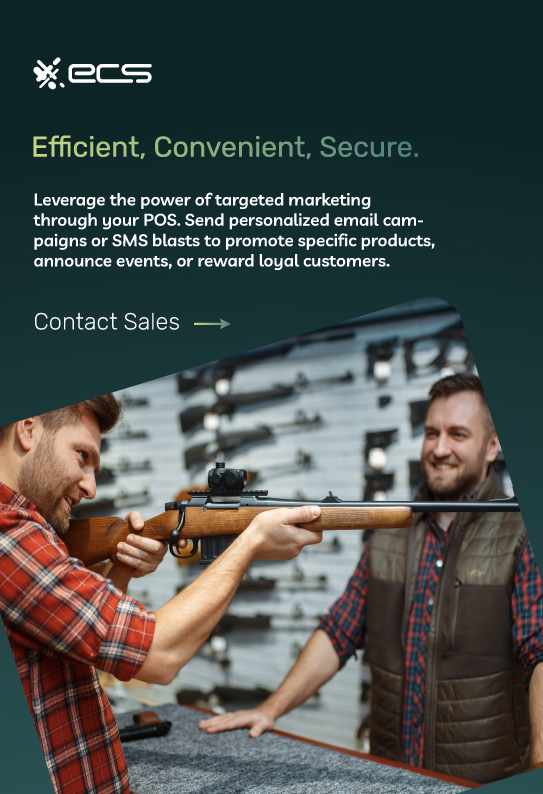
Tips For Choosing The Right Hardware
The options listed above are the most common hardware features when setting up a gun store POS. Each one of these will have additional options you may want to choose. Your vendor or payment processor may also offer options to buy the hardware for a one-time fee or sign a lease.
Each one of these buying options can have its benefits. Remember that leases will generally cost you more in the long run, similar to any other business lease. The advantage is that you usually get free or discounted hardware upgrades, and your initial investment will be lower.
When leasing hardware for your gun store, steer clear of long-term leases, as most situations do not justify them. Also, make sure the benefits of the lease outweigh the extra costs. This can vary depending on your shop and your own needs.
Compatibility
Compatibility is always important when integrating any new system with your business. Before choosing a POS system, review your current business software and systems to determine what you already use.
When shopping for a POS, you can use this list to ask your POS vendor or payment processor about any compatibility issues.
Some hardware you already own may be compatible with a new POS system. So, certain card readers or screens you already own will work with your new system.
Finally, there is software compatibility. If you are buying an all-in-one POS system but plan on using third-party FFL software, ensure they are all compatible. If you have questions about compatibility, you can ask the vendor or your payment processor.
POS Software
Now that you know about the different hardware options included with a gun store POS, it’s time to explain the software.
The software allows you to run different apps or add different features to your POS system to customize it for your business. You can think of it like a smartphone where you add apps to get different functionality.
Different POS software systems will have their own built-in or native functions. For a gun store POS, this generally includes the basic management functions you would expect. However, you can also use third-party apps to extend the POS functions.
Electronic Bound Book
Integrating an electronic bound book with your POS is one of the most important specialized POS tools for a gun store. This feature will help you streamline your transfers, save money, and avoid any errors that can threaten your FFL.
You essentially have two options for how to use an electronic bound book. The first option is to choose the default system bundled with your POS. The POS system monthly fee includes this option, making it the most economical choice.
Setting it up is also easy since it’s already integrated with your native POS software. This means it will work seamlessly and without issues right after setup.
The downside is that the bundled bound book app may not have all the features you want or need for your particular gun shop.
You can opt for a third-party bound book provider if that’s the case. These are add-on software packages designed to work with the most popular POS systems. Because these are more specialized, they offer advanced features that bundled systems may not have.
Since these come from a separate vendor, you must pay an additional monthly fee on top of the POS system fees. This will increase your costs, but if the features improve your business, it’s well worth a small monthly amount.
Most electronic-bound books will have ways to import or export your records from other systems easily. So, it’s not a difficult process if you ever change or need to upgrade.
e4473
Like an electronic bound book, you can use your POS system to record and store 4473 completed forms during a transaction.
It’s important to note the differences between an e4473 form and electronic storage of 4473 forms. The interchangeable use of these terms often causes confusion.
An e4473 form means the form was filled out electronically. For example, your POS system can have a tablet attached to it that allows your customers to fill out the form using a touch screen.
With an e4473 form, you are required to print a hard copy and store it physically for 20 years. Many FFLs find this process cumbersome but must do it to stay compliant.
Electronic storage of your forms is different. With electronic storage, you can use cloud-based rather than physical storage, which is much more convenient for many FFLs.
Some vendors that supply e4473 software for POS systems allow for cloud storage, but you must apply for an ATF variance if you don’t want to print out and store hard copies.
This may sound difficult, but applying for the ATF variance is relatively easy and common today. You can still accept e4473 forms through your POS if you don’t apply for a variance. You will just have to continue storing physical copies to remain ATF-compliant.
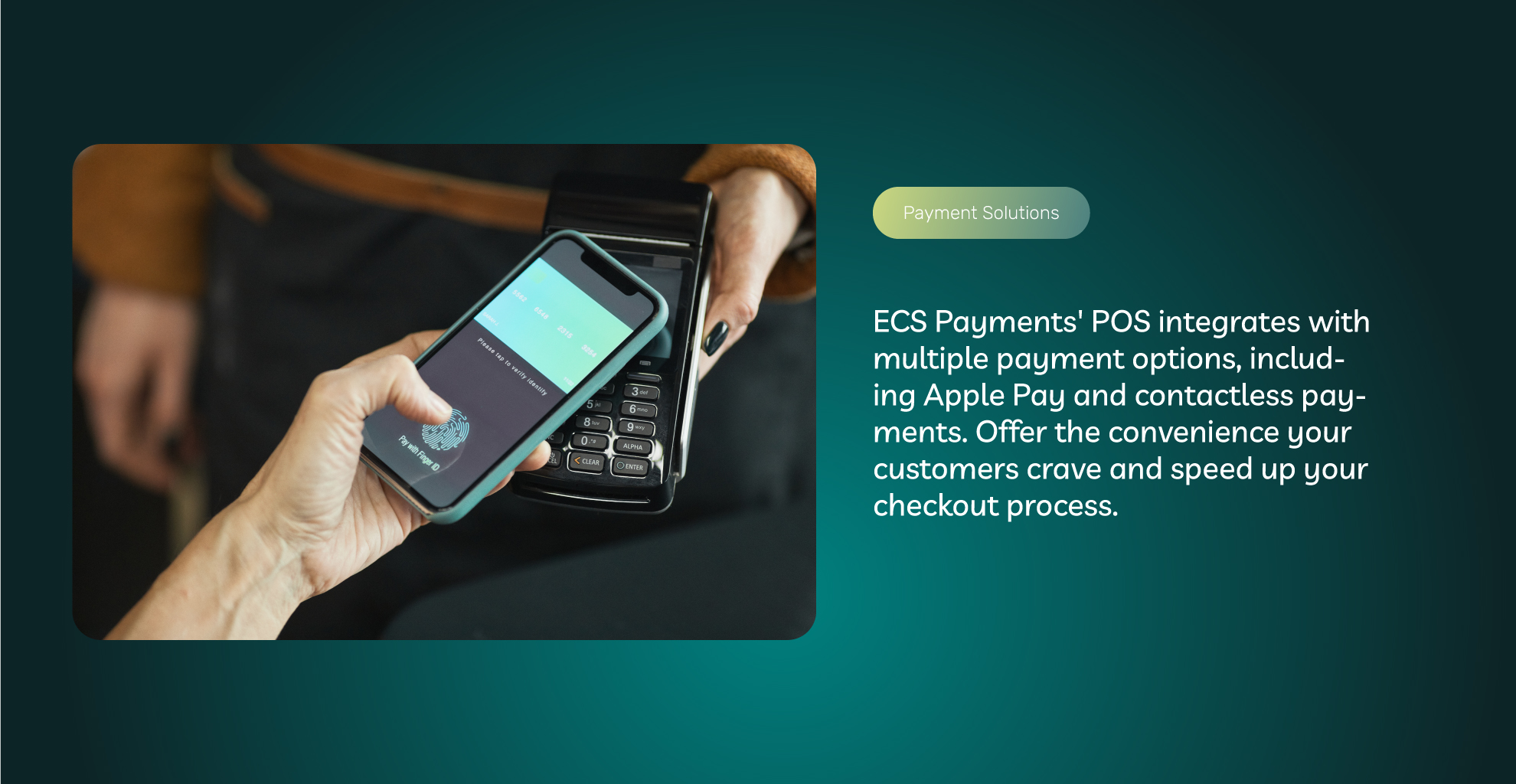
Advanced POS Features For Gun Store
Besides just an ATF compliance assistant, many advanced POS features also help with various gun store operations.
Gun Range POS Features
Managing a shooting range at your shop can sometimes be difficult during busy times. Your employees may need to sign up new shooters, while others must wait until a lane opens.
A gun shop POS can streamline this process by adding gun range management tools. These tools allow you to quickly sign up new shooters from the POS system. They can complete all the required waivers electronically to speed up the process. You can also scan IDs if needed to verify age or identity.
More advanced range management tools allow you to set up waiting lists and automatically send text alerts when lanes become available. These features can clean up your overall range situation during busy times.
If you run a shop with an attached range, you will want to make sure your gun shop POS has range management features to fit the size and traffic of your range. These features help your store and improve the overall firearms retail customer experience.
Employee Time Tracking Features
This is most important for larger shops with several employees coming and going throughout the day. With a POS system, employees can log in when they arrive and leave.
This eliminates the need for additional time tracking like time cards or manual time tracking. You can also integrate the POS with your accounting software to automatically calculate payroll based on the recorded time.
Time tracking also provides additional POS system security for your gun store and all transactions.
This is very important if you ever have a customer dispute. It can also be helpful for compliance issues. If certain documents related to a transfer need attention, you can quickly contact the employee who worked on that transaction.
Integrated Online Auction Tools
It’s not uncommon for gun stores to use popular auction sites like GunBroker. However, managing your listings can be time-consuming, which makes the entire process less profitable than it could be.
Consider a POS system with built-in online auction integration if you use these auction sites. These features let you take items directly from your stored inventory and turn them into listings.
All the relevant stock information will populate the fields on the auction site, saving you a lot of time. You can also manage your listings from within your POS. Sales are automatically removed from your inventory listings.
You can automate the process of posting listings and managing them with the right POS integration. This allows you to sell more while spending less time.
Memberships
If you don’t already offer memberships, using this POS feature can help you add this revenue stream to your gun shop.
Many shops provide memberships for either regular purchasing discounts or range usage. Businesses can manage these types of memberships from within the POS system to streamline the entire process.
Even if you offer memberships but manage these manually or through a separate piece of software, using the POS management tools will make your life much easier.
You can quickly sign up new members at the checkout area and look up existing memberships or customer data.
Payment Processing
The final major component of a gun store POS will be your payment processing.
Your payment processor provides you with a merchant account to handle payment processing. It’s important to note that not all merchant accounts and not all payment processors are the same.
This is especially true when it comes to gun stores and gun store POS systems designed to process payments for firearm transactions.
Gun stores require a high-risk merchant account because credit companies view firearm and ammunition purchases as “high-risk.” Several factors determine if a product category is high risk. This includes the average transaction amount, rate of chargebacks, and other factors.
High-risk processing costs more for the merchant, but this is where different payment processors play a part.
A payment processor with experience in high-risk transactions and gun sales can help you find the lowest processing costs possible. This means you save money on every transaction. Over time, this adds up to a lot of money that you keep in your business.
But beyond just saving you money, the right payment processor can also help you navigate certain issues specific to FFLs and gun stores regarding their merchant accounts.
For example, adding a POS system to your gun store requires integrating it with your merchant account. An experienced payment processor will have the expertise and solid customer support to help you with this, so the process is seamless.
How To Choose A Gun Store Payment Processor
Now that you know the major components of a gun store POS, you can make more informed decisions on what you need.
If you’re opening a new store, you will have more flexibility, and you should base many of your other decisions around your POS system. For example, you likely don’t have additional business software yet. This means you want to utilize the POS for as many of your business operations as possible.
In this case, you will want to focus on more than just the gun-store-specific options. You will also focus on internal analytics capabilities, accounting integration, and other essential business functions. Letting your POS handle these will streamline your business management and reduce redundancies.
If you operate an existing gun store and add a POS, you will want to consider compatibility with your existing business software.
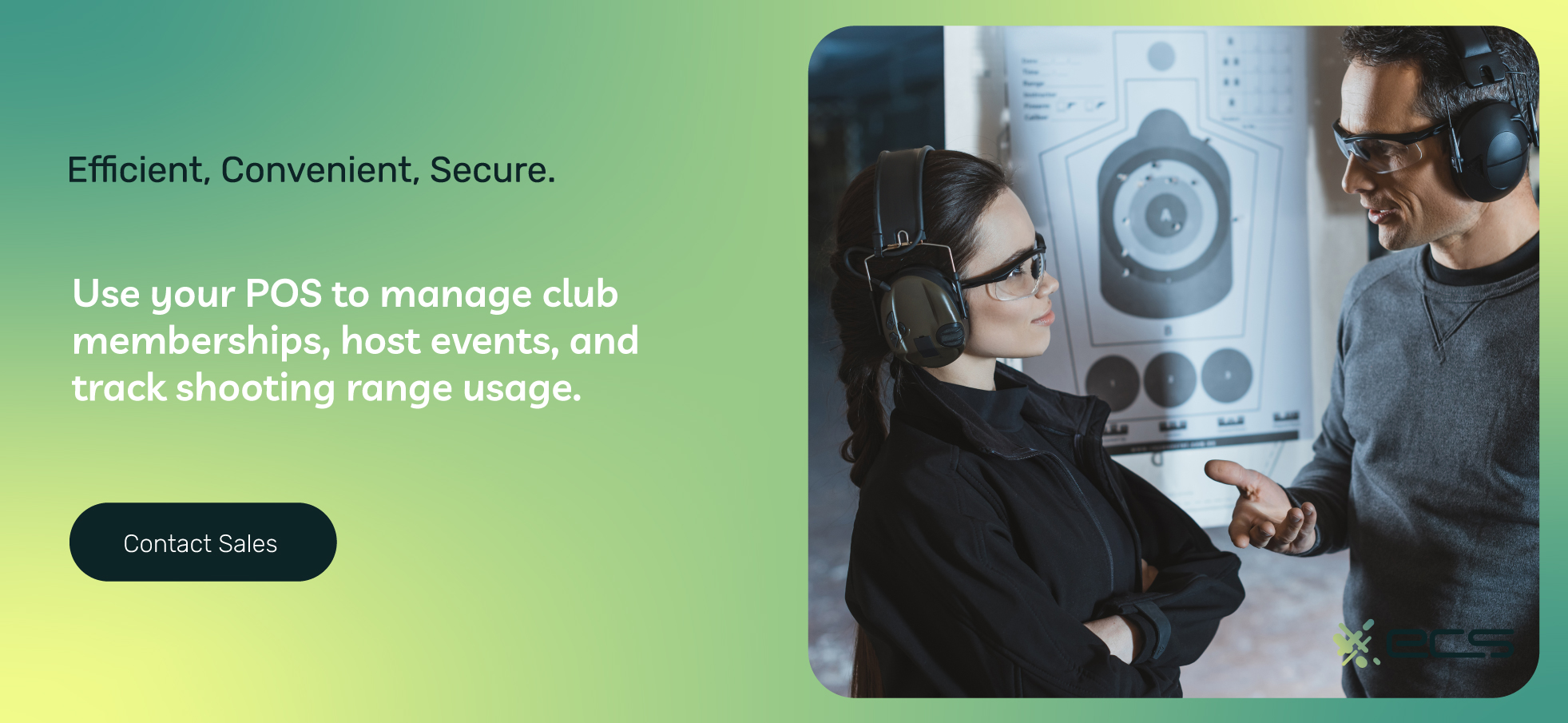
Identify What Areas of Your Gun Store Need Improvement
A POS system aims to enhance various aspects of your business. So, the first step is to identify which areas need improvement.
For example, if handling transfers has become tedious and is slowing down your store operations, you want to focus on this area when choosing a POS. Identify the areas of ATF record keeping and form submission you want to improve.
Another area could be inventory. Perhaps you are having struggles managing inventory and maintaining proper stock levels. If so, areas such as inventory management and sales analytics are something to look for in a POS.
The additional sales data analytics will help you identify items that sell better than others so you can respond better to demand.
ATF Compliance
Most every gun store POS will be ATF compliant. However, some features may need additional forms or ATF requests.
An example of this is online storage for your 4473 forms. Several providers offer this service, but you still need to request a variance from the ATF before doing so. Also, any forms you have from before you switched to cloud storage will still need to be held physically.
Integration
If you’re not opening a gun store from scratch, you likely already have existing software to manage different aspects of your business. One example could be if you use QuickBooks for your accounting or ADP for your small business payroll.
You’ll want to confirm your POS choice can easily integrate with the services and software you already use.
Hardware Selection
Depending on the size of your store, you may have different hardware requirements. Identify the hardware you already own, such as card readers or tablets. You can use these with your new POS system.
If your existing payment processing hardware is outdated, this is a good time to upgrade, and you’ll likely save money by combining them with your POS setup.
Software Selection
Next up is software. In a previous section, we outlined some common features that can be added to a gun store POS. Decide which ones are most important to you, and then use that to narrow down your search criteria.
Additionally, you’ll want to consider which areas may require a third-party option. This can happen if the built-in option in the POS system doesn’t have the full functionality your shop requires.
Most third-party apps integrate easily with popular POS systems, so the bottom line is that this doesn’t complicate your setup that much.
Help Finding The Perfect POS and Payment Solution for Your Gun Store
There are many options for choosing the right POS system for your gun store.
At ECS Payments, we specialize in FFL payment processing and can help you find the perfect POS solution to help you streamline your ATF compliance and reduce costs.
Contact ECS Payments today and learn more about our FFL payment processing solutions to help you utilize the latest firearms retail technology trends.
Frequently Asked Questions About Gun Store POS
A gun store POS consists of hardware such as POS stations, card readers, barcode scanners, receipt printers, cash drawers, and customer-facing displays. The right gun store POS software should accompany the POS stations as well to help with the entirety of the business’s operations.
Gun store POS hardware and software help to streamline transactions, inventory management, and ATF paperwork, which improves overall business efficiency.
Yes, ECS Payments offers high-risk merchant accounts to process firearm transactions. We offer cost-effective solutions tailored to the unique needs of FFLs.
Yes, ECS Payments can integrate POS software and most existing POS hardware, facilitating a smoother transition to your new POS setup.
When choosing a payment processor for firearms transactions, factors include experience, processing costs, and FFL-specific support. ECS Payments offers FFL payment processing and integration with electronic bound book features in gun store POS systems for efficient firearm transactions.
